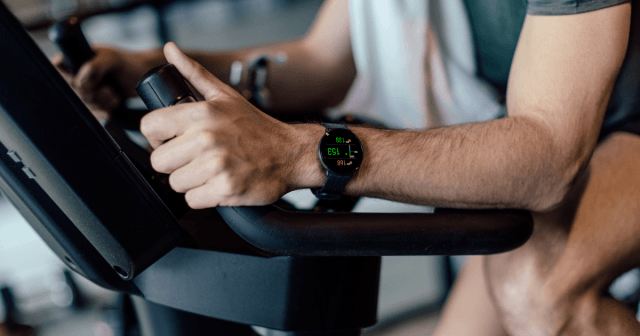If there’s one thing the Finnish know, it’s happiness. Well, according to the World Happiness Report 2023, where the Nordic country was selected as the happiest country in the world for the sixth year in a row. Central to this annual survey are the reported levels of physical and mental health by citizens in each country, which shines a light on this connection. Does our physical health affect our mental health – and vice versa?
Obviously, yes – and the Finns are an excellent example of this connection. “The high level of physical activity in Finland should receive more attention when the happiness survey is discussed,” observes Dr. Raija Laukkanen, Director of Science Collaborations at Polar Electro (based in Finland). It’s an important point, as according to a recent report from the World Health Organization, Finns are the most physically active people in Europe.
“The high level of physical activity in Finland should receive more attention when the happiness survey is discussed.”
Dr. Raija Laukkanen
However, this isn’t just about hitting the gym, as Finland is one of the leading countries for everyday movement, whether taking a walk or cycling to work. “In the Nordic countries, physical activity is hardwired into us from a very early age, and our environment is the source of our energy,” adds Laukkanen.
So, how do we begin to understand and enhance our mind-body connection? In this blog, we’ll look at the relationship between physical and mental health, how mindset impacts your workouts, how exercise impacts your wellbeing, managing stress with exercise, and how being active outdoors affects your body and mind.
The relationship between physical and mental health
As the adage goes, a healthy body is a healthy mind. Yet, while taking care of your physical fitness has always been encouraged, talking about mental health has typically been taboo. That means we’ve sometimes overlooked the benefits of exercise on our mental health and, in turn, the benefits that feeling positive and motivated have on our physical health.
Over the past few decades, research has strengthened our understanding of how physical and mental health are inextricably linked. Unfortunately, it is often only when one of these parts of ourselves suffers that we see how it affects the other areas of our health.
For example, someone experiencing a mental illness like depression has a greater chance of developing low motivation and thus being less likely to exercise regularly. Similarly, physical health problems like severe asthma, heart conditions, or chronic hip pain, for example, significantly increase our risk of experiencing mental health issues like anxiety.
However, we don’t need to focus solely on the negatives when examining the relationship between physical and mental health. So, first, let’s look at the benefits of a positive mindset.
Does a positive mindset improve your physical fitness?
There has been some interesting research about the correlation between the amount of exercise you do and how you perceive this amount compared to your peers. A 2015 study from the University of California San Diego, USA, explored the idea that if you view yourself as a fit, athletic person, you will feel encouraged to continue exercising to fit this mindset.
Similarly, researchers at Stanford University looked at the data of 61,000 adults over a 21-year period, which turned up some interesting findings. For people who exercised the same amount, those who viewed this amount of exercise as being less than their peers died younger than those who thought they did more than others. Even factors such as general health and smoking did little to alter the effect of this mindset.
So, how we mentally perceive our activity also appears to have an enormous impact on our physical health. But, in turn, does exercise boost our mental health too?
Can exercise make you happy?
“Exercise is essentially medicine for the mind,” notes Sports & Exercise medicine professional and Brain Health entrepreneur Teemu Vornanen, “so working out your body will boost it as well.” But what happens to the brain when we work out that causes us to feel so good?
One of the first things you’ll probably notice is how exercise immediately boosts your mood. That’s because aerobic activity enhances the production of endorphins, the feel-good neurotransmitters in your brain. Your body does this to reduce your perception of any potential pain you may experience while working out to encourage you to keep going.
Additionally, your body rewards you with a surge of two other mood-enhancing chemicals: dopamine, which is your brain’s way of rewarding you, and serotonin, which helps stabilize your mood and sense of wellbeing. These two contribute to the upbeat feeling of a runner’s high while you’re sweating away and then stick around in your brain for a few hours after you exercise, which is why you feel so good (especially about yourself) after you work out.
However, the long-term benefits go beyond a mere few hours. When you exercise regularly, you essentially strengthen your mind as well as your muscles, changing how your brain is structured and functions over time. One of the ways this potentially happens is through a protein called brain-derived neurotrophic factor (BDNF).
“Exercise is essentially medicine for the mind, so working out your body will boost it as well.”
Teemu Vornanen
When you exercise, your body releases BDNF, which is primarily involved in growing new brain cells. It’s also a key molecule involved in neuroplastic learning and memory changes in your hippocampus. Interestingly, people who struggle with depression and anxiety tend to have a smaller hippocampus, and one of the effects of using anti-depressants is that it increases the production of BDNF. So, through regular exercise, you could also naturally stimulate more of this molecule and, in turn, help to grow and strengthen your brain.
Using exercise to manage stress
When it comes to the mental stresses of everyday life, is it possible to physically shake them off? Well, exercise requires a certain level of focus, be it a long hike or a snappy HIIT session, which is an excellent distraction from whatever irritating thoughts are plaguing your mind. Add to this the happy chemicals mentioned above, which means you’ll feel more optimistic, focused, and calmer post-workout than you did beforehand.
In fact, by boosting the amount of endorphins, serotonin, dopamine, and adrenaline through physical activity, you not only put yourself in a better mood but also increase your confidence in facing problems. A 2014 phenomenological study from Southern Illinois University, USA, showed that exercise was particularly effective at helping the participants with “problem-focused coping” and life satisfaction through improving their mind-body connection.
Regular exercise also helps you feel more relaxed, increases your self-confidence, and reduces the symptoms of depression and anxiety. It can also help you to sleep better, which will also improve your capacity to manage stress. But it’s also important to remember not to overdo it. “Too much is too much,” says Vornanen. “You don’t want to put your body under chronic stress by overdoing it. There is an upper limit where too much exercise stops being helpful.”
Does exercising outdoors help?
“In Finland, being outdoors is very natural to us. We spend a lot more time than other countries just being outside, walking in the forest, going camping, taking our bicycles to work”, explains Laukkanen, a founding member of the International Nordic Walking Association. So, does where you exercise play an important role in the relationship between your physical and mental health too?
Sunshine is a mood booster, prompting your brain to produce serotonin – alongside what you already receive from exercise. Exposure to all those warming rays can also help prevent seasonal affective disorder (SAD), a type of ‘winter depression’ caused by seasonal changes and often found in people with low vitamin D levels.
“In Finland, being outdoors is very natural to us. We spend a lot more time than other countries just being outside, walking in the forest, going camping, taking our bicycles to work.”
Dr. Raija Laukkanen
Spending time in nature is generally great for your mental health too, and there has been a vast range of research that supports this. Combining the time you spend exercising with the time you spend in nature is an effective way to ensure that you reap both benefits. But how does being outdoors impact the way you exercise?
“Studies have shown that exercise with equal intensity is experienced lighter outdoors than indoors,” says Laukkanen. That means your rate of perceived exertion for exercising in nature is lower, so it feels easier even if you are doing the same workout. It’s also probably why people who exercise outside do it more often and for longer than those who work out indoors. A win-win all around, then.
The best exercise to release endorphins
If you want to exercise in a way that will boost both your physical and mental health, is there a particular workout to try? “The best type of exercise for your brain is the one that you like because enjoyment is the most important factor,” observes Vornanen. You’re also more likely to stick with a workout you like, which is vital for making regular exercise a part of your everyday life.
In addition to enjoyment, here are some other factors to keep in mind when choosing a workout for an endorphin surge:
- Do at least 30 minutes of continuous exercise: research suggests that endorphins are released after this point.
- Keep to heart rate zones 2 and 3: get your body moving and blood pumping with moderate-intensity exercise. Focus on staying within heart rate zones 2 and 3 to maintain this level but not overdo it.
- Try group exercise: not only is exercising with others good for your social health, but according to research, it also increases your endorphin boost compared to exercising alone.
“The best type of exercise for your brain is the one that you like because enjoyment is the most important factor.”
Teemu Vornanen
So, doing a group activity that involves some form of moderate cardio for at least 30 minutes appears to be ideal. What a great reason to suggest a hike, cycle, jog, or game of tennis to your friends. Of course, any exercise that makes you feel good, even on your own, will always be worthwhile. Remember to build your fitness gradually, and don’t let all those feel-good chemicals get you so excited that you end up with an injury.
Conclusion: physical and mental health
One of the most striking things about the growing research around the connection between our physical and mental health is how much we can boost our daily wellbeing through something as simple as exercise.
In the coming decades, it will be interesting to see if healthcare approaches shift toward empowering people to make this connection for themselves. For example, making exercise part of a prescription when mental health challenges arise. Or similarly, prescribing meditation or affirmations when physical health issues occur.
In the meantime, we can all learn much from the Finnish approach to health and happiness. As Laukkanen states, “Physical and mental health cannot be separated,” so let’s all shift our mindset for the better.
If you liked this post, don’t forget to share so that others can find it, too.
Or give it a thumbs up!
I like this article
Please note that the information provided in the Polar Blog articles cannot replace individual advice from health professionals. Please consult your physician before starting a new fitness program.





